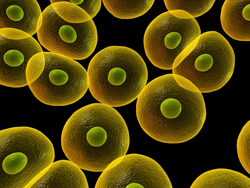Proportional nutrient delivery for safe and effective tissue regeneration
Although perfusion bioreactors have been successfully used to increase nutrient transport, it can often be a counterproductive process if it exerts harmful mechanical stresses on cultured cells. Lowering perfusion rates to minimise such negative outcomes can result in inadequate nutrient delivery once more. 'The balance between transport and mechanical issues in 3d regenerative tissues, using the perfusion bioreactor' (Transmex) is a project that aimed to find the balance between nutritional advantages offered by perfusion and associated cell-death. Specifically, the EU-funded project set out to model the fluid flow-induced deformation of cells in tissue-engineered constructs. In activities directed at uncovering the advantages and limitations of media perfusion for neo-tissue development, researchers demonstrated an operational range of beneficial perfusion as well as the parameters defining this range. Results clearly showed the need to identify a perfusion system's operational capacity and the cell-scaffold model. In this way, a culture strategy can be maximised for efficient nutrient supply without applying detrimental pressure to either the cells or their seeding scaffold. Since bioreactor pressure build-up during direct perfusion cannot be avoided, perfusion times logically dictate if there will be damage to the tissue and if the culture will be compromised. By acknowledging that pressures and timing differ from system to system, Transmex project partners proposed that tissue-engineering strategies should be adapted in accordance with the system in use. This will afford the means to monitor differential pressure inside a perfusion culture system and, using a range of flow rates, profile the time frame within which pressure becomes harmful. Online monitoring during perfusion culture means that high and low flow rates can be used interchangeably to optimise nutrient delivery to cells within safe pressure limits. Transmex project results can be used by the scientists and clinicians to develop optimal strategies for tissue regeneration. Achievements in this area will significantly contribute to international health-care system efforts to abate the burden of costly diseases.

